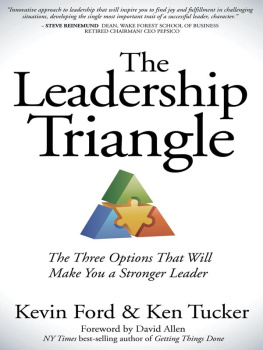Contents
Guide
Pagebreaks of the print version

Task Unit Bruiser SEALs, explosive ordnance disposal bomb technicians, and Iraqi soldiers conduct a clearance operation in the Malaab District of eastern Ramadi alongside U.S. Soldiers of Task Force Red Currahee, the legendary Band of Brothers of the 1st Battalion, 506th Parachute Infantry Regiment (1/506th), 101st Airborne Division. A 1/506th company commander, Gunfighter Six, an outstanding warrior and professional Soldier, is in the foreground at right.
( Photo courtesy of Todd Pitman)

The author and publisher have provided this e-book to you for your personal use only. You may not make this e-book publicly available in any way. Copyright infringement is against the law. If you believe the copy of this e-book you are reading infringes on the authors copyright, please notify the publisher at: us.macmillanusa.com/piracy.
Dedicated to the Big Tough Frogmen of SEAL Team Three, Task Unit Bruiser, especially: Marc Lee, Mike Monsoor, and Ryan Job, who laid down their lives; Chris Kyle, a friend and a Legend; and Seth Stone, the Delta Platoon commander, our brother. May we honor them always.

War is a nightmare. It is awful, indifferent, devastating, and evil.
War is hell.
But war is also an incredible teachera brutal instructor. We learned lessons in war, written in blood, about sorrow, loss, and pain. We also learned about the fragility of human life and the power of the human spirit.
Of course, we learned about strategy and tactics. We learned how to most effectively take the fight to our enemies. We learned how to analyze targets, gather and exploit information, find our enemys weaknesses, and capitalize on them. We applied these lessons and made the enemy pay for their transgressions.
But of everything we learned, nothing is as universal and transferable as how we came to truly understand the power of leadership. We saw how successful leaders could create victory where victory seemed impossible. We also witnessed how poor leadership could bring defeat upon teams that seemed invincible.
We discovered firsthand that the principles of leadership are simple, but not easy. There are strategies, techniques, and skills that take time and practice to utilize effectively. The foremost requirement for potent leadership is humility, so that leaders can fully understand and appreciate their own shortfalls. We learned much on the battlefield and have tried to pass those lessons on, but we are still humbled every day by our mistakes and all that we continue to learn.
This book builds upon our first book, Extreme Ownership: How U.S. Navy SEALs Lead and Win. It is the follow-on book that so many readers of Extreme Ownership asked us to write. We have laid out the concepts in The Dichotomy of Leadership with clear descriptions and context so that it can be read and understood independently of the first book. For further explanation of the overviews given in the following pages, readers may want the deeper understanding and background provided in Extreme Ownership. But, while it may be helpful to understand the first book for greater enlightenment, it is not essential.
In both books, we reference our experiences in the military, where we both served as SEAL officers. The bulk of our lessons learned draw from the Battle of Ramadi in 2006, where we served as the leaders of SEAL Team Three, Task Unit Bruiser. During that battle, the SEALs from Task Unit Bruiser fought with incredible bravery and tenacity. They delivered huge impact on the battlefield. But Task Unit Bruiser also suffered severe casualties. Those sacrifices will never be forgotten.
Upon our departure from active duty in the U.S. Navy, we launched a company, Echelon Front, to share the lessons we learned with leaders in every capacity. In 2015, we published Extreme Ownership. Through that book, leaders all over the world embraced its fundamental principlesthe mind-set of Extreme Ownership and the four Laws of Combat: Cover and Move, Simple, Prioritize and Execute, and Decentralized Command. More than a million readers have taken those tenets and implemented them in their professional and personal lives with extraordinary results.
But employing these principles to the fullest proves challenging. The nuances, if neglected or misunderstood, create obstacles difficult to overcome. We wrote this book to provide the granular insight and understanding that often render the difference between success and failure. This book will enable you to better process, analyze, and apply these leadership principles to your battlefield, in whatever arena that might be, whether leading in combat, business, or life.
The format of The Dichotomy of Leadership mirrors that of Extreme Ownership: there are three parts to the book, four chapters in each part, and three sections to each chapter. The first section of each chapter describes an experience from combat or SEAL training; the second section discusses the relevant principle; and the third provides the direct application of the concept to the business world.
The Dichotomy of Leadership is not a memoir or a history of the Iraq War. As we said in Extreme Ownership, This book is about leadership. It was written for leaders of teams large and small, for men and women, for any person who aspires to better themselves. Though it contains exciting accounts of SEAL combat operations, this book is a collection of lessons learned from our experiences to help other leaders achieve victory. If it serves as a useful guide to leaders who aspire to build, train, and lead high-performance winning teams, then it has accomplished its purpose.
The combat and training experiences we describe are all true stories. But they are not meant for historic reference. The dialogues we have written are intended to impart the message and meaning of conversations. They are imperfect and subject to the passage of time and the shortfalls of memory. We have also concealed specific tactics, techniques, and procedures and ensured that no classified information about when and where specific operations took place and who participated in them is revealed. In accordance with U.S. Department of Defense requirements, the manuscript was submitted and approved through the Pentagons security review process. We do not use the names of our SEAL teammates, unless they are the names of our fallen or they are SEALs already in the public eye. Our brothers still on active duty in the SEAL Teams are silent professionals who seek no recognition, and we treat our responsibility to protect them with the utmost seriousness.
We have taken the same precautions to protect the incredible Soldiers and Marines we served with in the Battle of Ramadi and elsewhere. Their names fill our memories with the extraordinary leadership, sacrifice, and heroism they demonstrated. But to ensure their privacy and security, we do not use their names in this book unless they are already known to the public.
Similarly, we have taken every measure to protect confidentiality for the clients of our leadership consulting company, Echelon Front. We have refrained from using company names, changed the names and titles of individuals, and in some cases abstained from using industry-specific information or altered it. As in Extreme Ownership, while the stories we tell from the business world are based directly on real experiences, in some cases we have combined situations, condensed timelines, and modified details to protect confidentiality or more clearly emphasize the underlying principles we are trying to illustrate.








